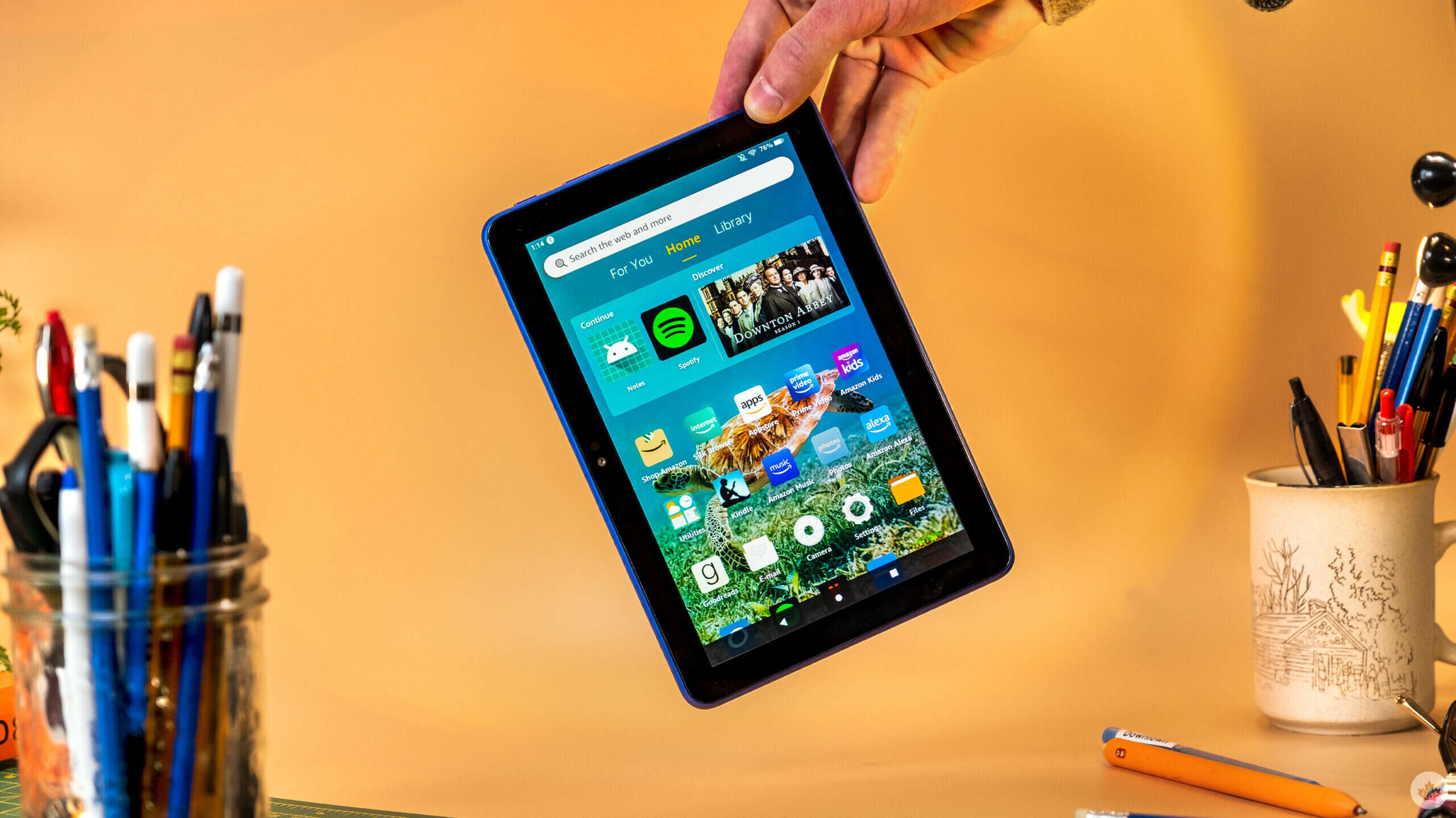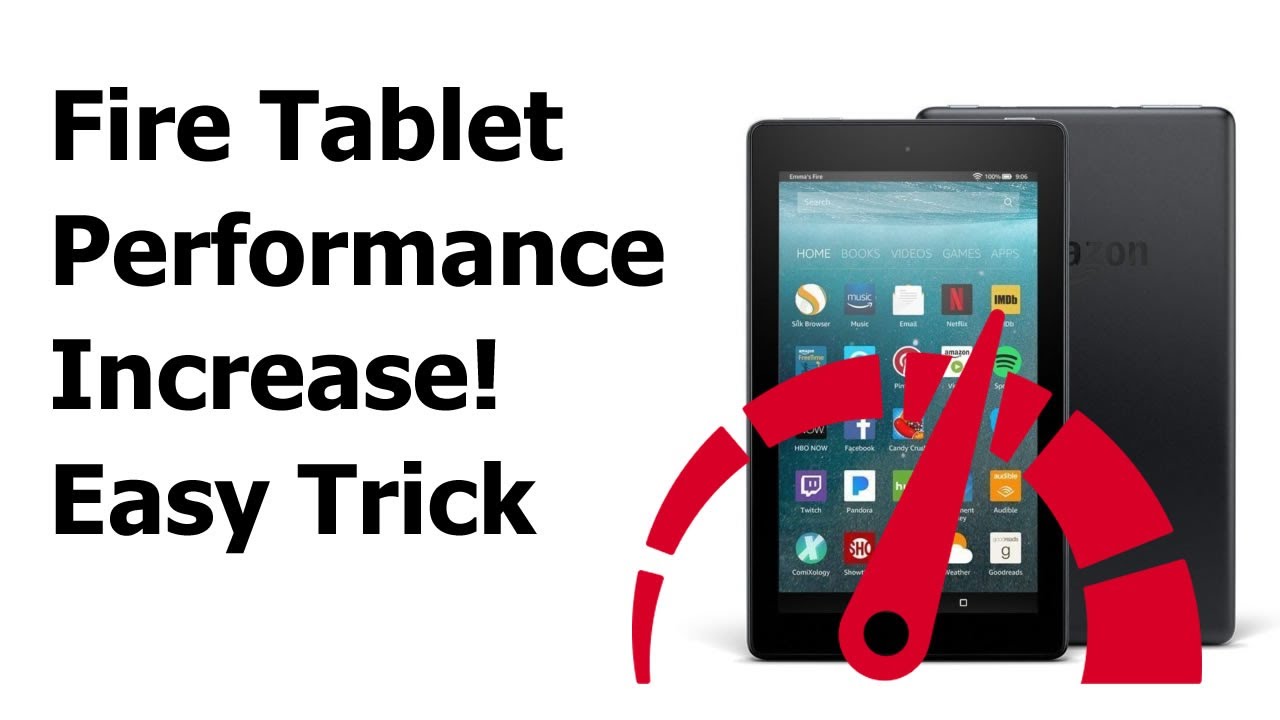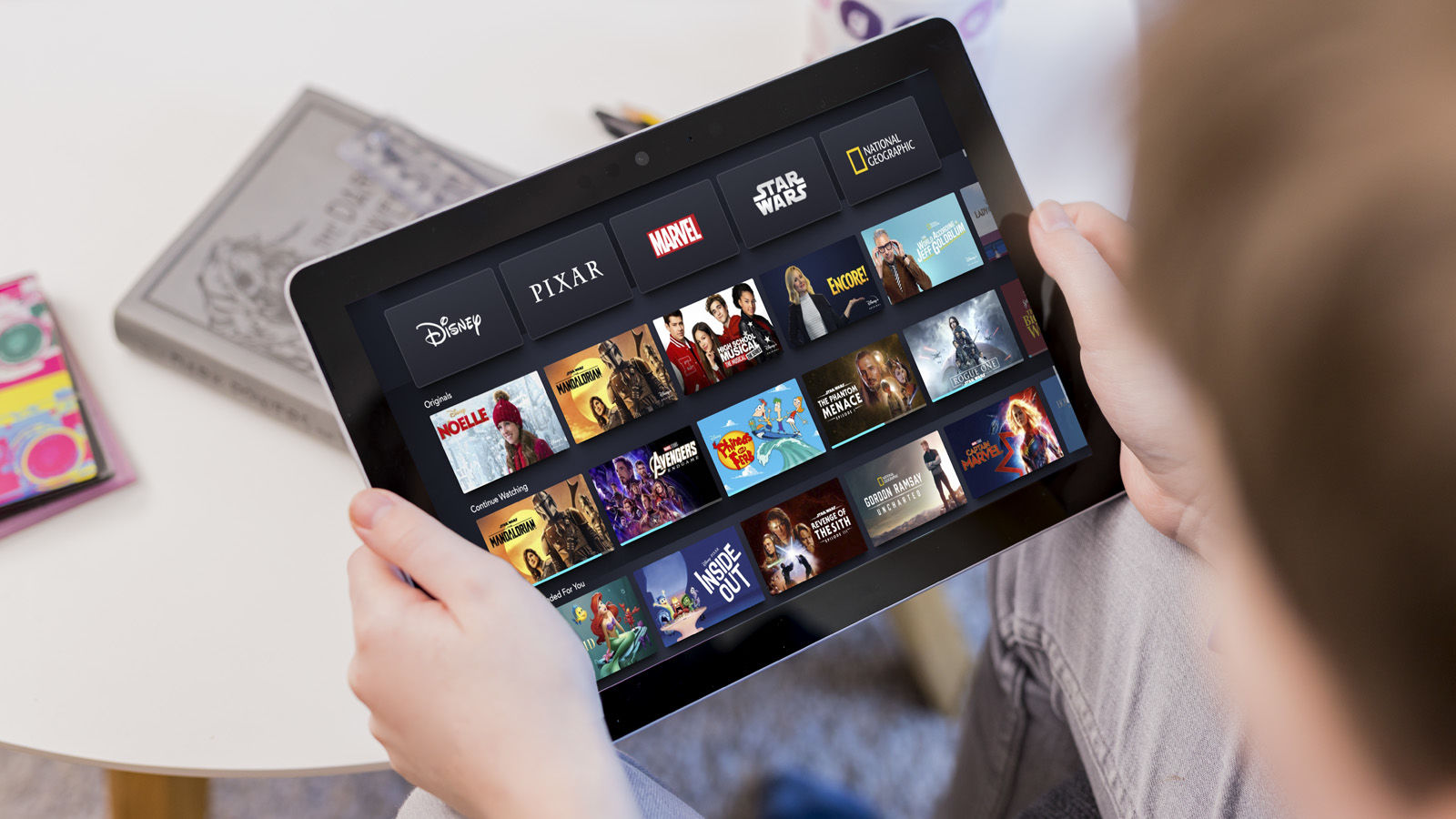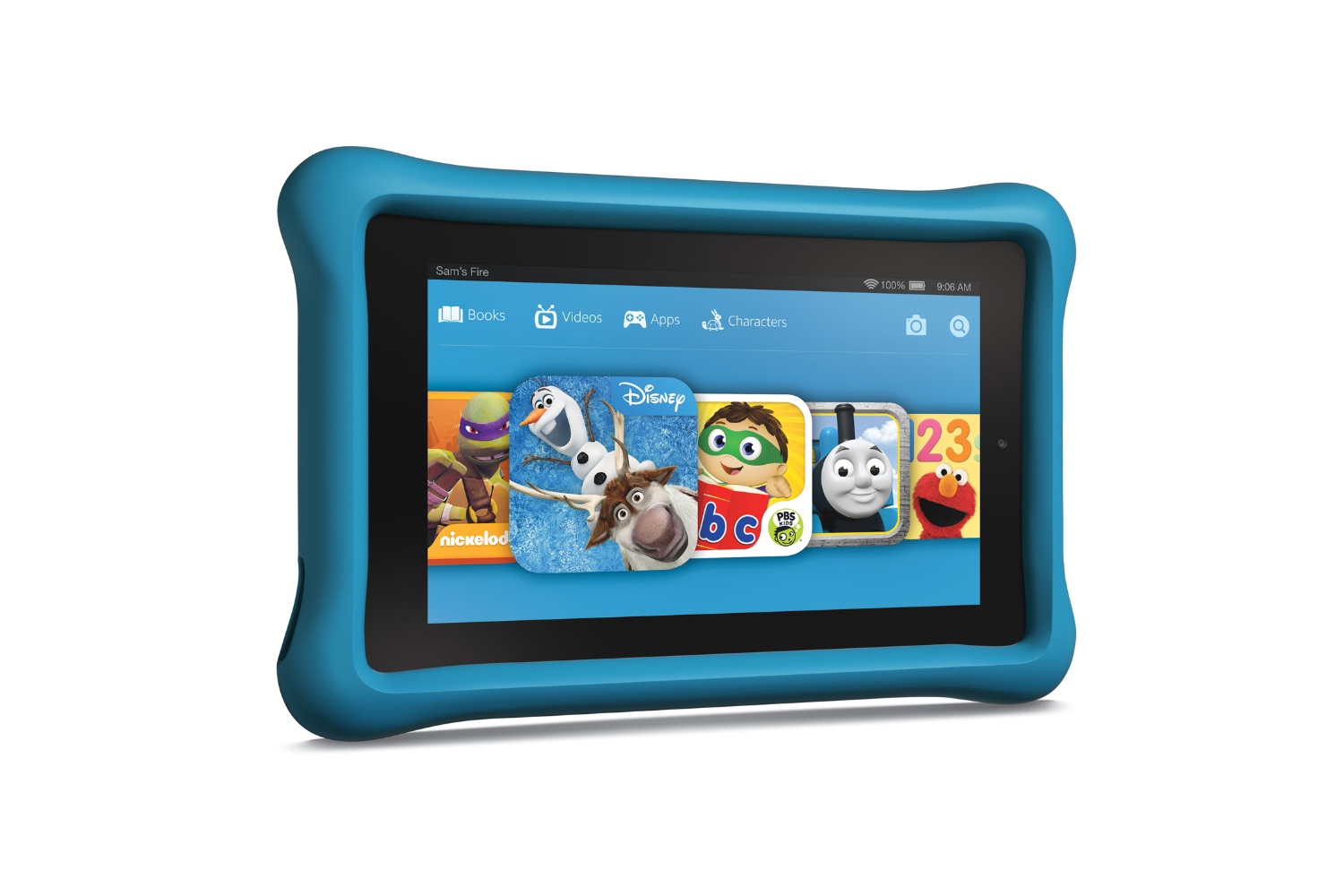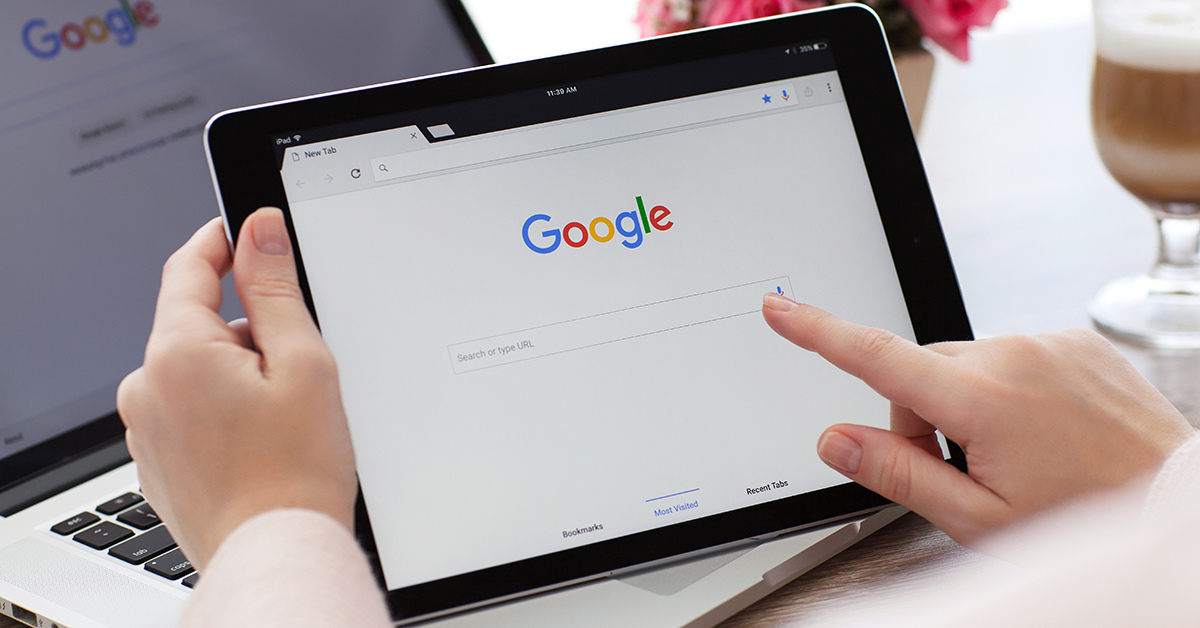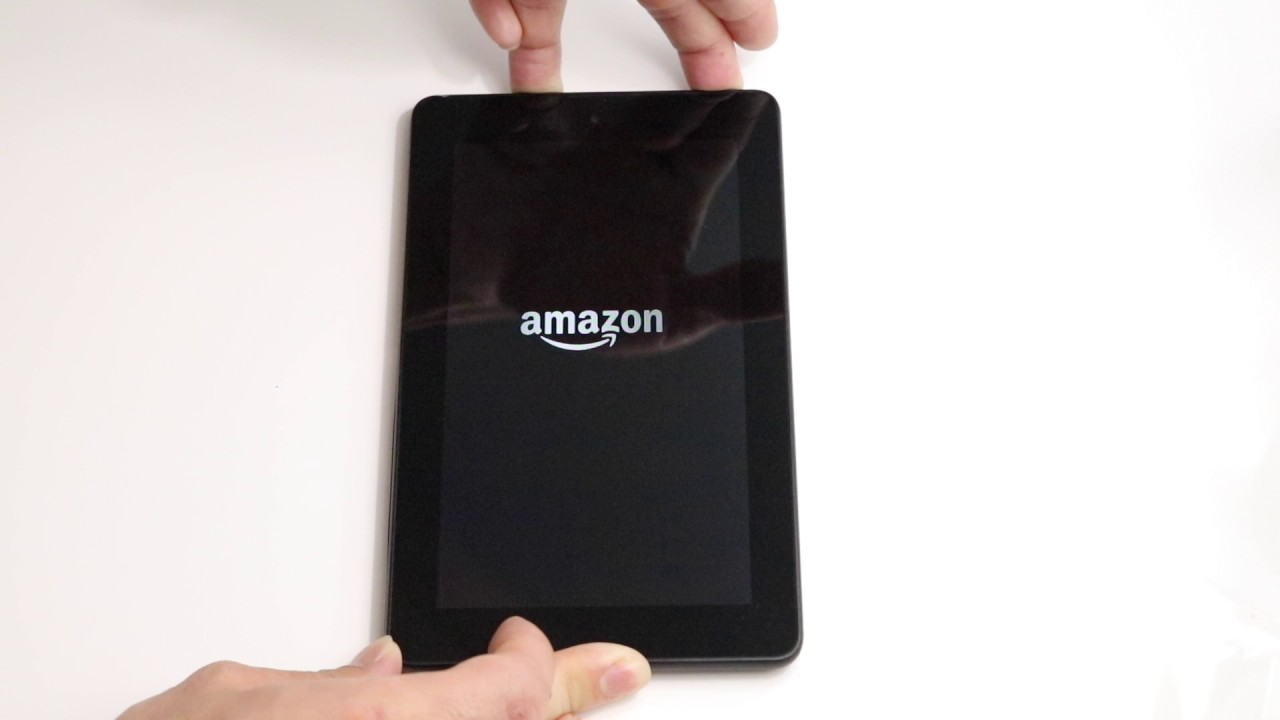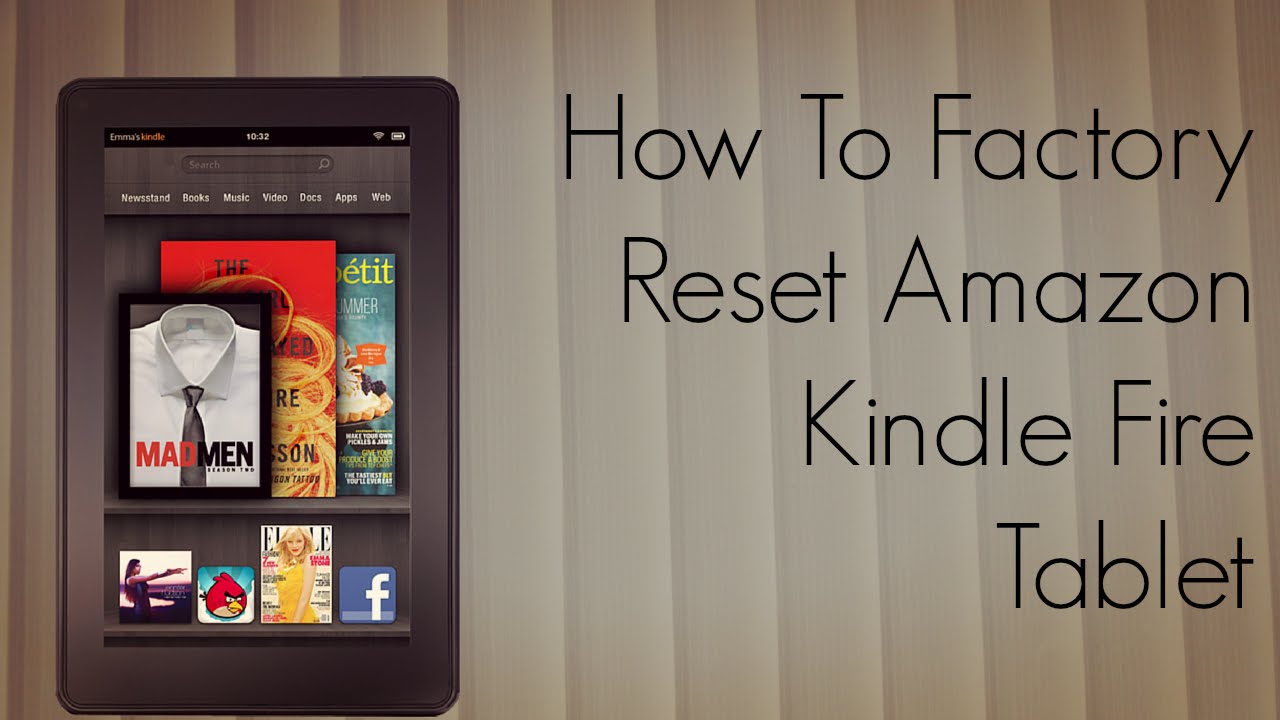Introduction
Welcome to this article on why your Fire Tablet may be running slower than usual. If you own a Fire Tablet, you may have experienced this frustrating issue at some point, where the device seems to be sluggish and unresponsive.
This article aims to explore the common reasons why your Fire Tablet may be slow and provide effective solutions to improve its performance. It’s important to note that a slow tablet can hinder your productivity, limit your entertainment experience, and overall, be a source of frustration.
Before we delve into the possible causes and solutions, it’s essential to understand that technology does age over time. Even though Fire Tablets are designed to withstand heavy usage, factors such as storage capacity, software updates, and background processes can all contribute to a decrease in performance.
Fortunately, there are several steps you can take to identify and resolve the issues causing your Fire Tablet to run slowly. By following these steps, you can optimize your tablet’s performance, making it operate smoothly and efficiently once again.
So, if you’re tired of waiting for apps to load, experiencing lag when browsing the internet, or dealing with overall sluggishness, keep reading. In the following sections, we will dive deeper into the common reasons behind a slow Fire Tablet and provide practical solutions to help you reclaim its speed and responsiveness.
Background
Fire Tablets, developed by Amazon, have gained massive popularity as versatile and affordable devices that offer a range of features. They provide users with access to a wide array of digital content, including books, apps, movies, and more. However, like any other electronic device, Fire Tablets are not impervious to performance issues, including sluggishness and decreased responsiveness.
Understanding the background of your Fire Tablet can help you better comprehend why it may be running slower than usual. Fire Tablets run on a customized version of the Android operating system, Fire OS, which is optimized for Amazon services and content. This unique operating system works in tandem with the tablet’s hardware to deliver a seamless user experience.
However, over time, various factors can contribute to a decline in performance. As you continue to use your Fire Tablet, it accumulates temporary files, caches, and data from apps and web browsing sessions. These files can take up valuable storage space and slow down your tablet’s operation.
Additionally, as newer versions of apps and software are released, they may demand more resources from your tablet’s hardware. If you haven’t updated your Fire Tablet’s software, it may struggle to keep up with the demands of newer applications and operating system features.
Background processes and services can also be a reason for a slow Fire Tablet. These tasks, which run silently in the background, consume system resources and can impact overall device performance. Furthermore, if your tablet becomes infected with viruses or malware, it can significantly impair its performance and compromise your privacy.
Given these possibilities, it’s crucial to uncover the root causes of your tablet’s sluggishness and take appropriate measures to address them. In the following sections, we will explore the common reasons behind a slow Fire Tablet and the recommended solutions to get it back up to speed.
Common Reasons for Slow Fire Tablets
There are several common reasons why your Fire Tablet might be running slower than usual. Identifying the underlying causes can help you determine the most effective solutions to address the sluggishness. Let’s take a look at these common reasons:
- Insufficient Storage Space: One of the primary reasons for a slow Fire Tablet is limited storage capacity. When your device’s storage is nearly full, it can hinder the tablet’s performance as it struggles to allocate space for new files and apps.
- Overloaded Cache: Over time, the cache files of various apps and the system itself can accumulate, taking up valuable storage space. When the cache becomes overloaded, it can slow down your Fire Tablet’s performance as it needs to sift through unnecessary data to find what it needs.
- Outdated Software: If you haven’t updated your Fire Tablet’s operating system and apps, it can lead to compatibility issues and decreased performance. Updated versions often contain bug fixes, performance improvements, and optimizations that can enhance your tablet’s speed and responsiveness.
- Running Too Many Apps in the Background: Having multiple apps running simultaneously can put a strain on your tablet’s resources, resulting in lag and sluggishness. Some apps continue to operate in the background, consuming CPU and memory, even when you’re not actively using them.
- Background Processes and Services: Certain background processes and services on your Fire Tablet may be using significant system resources, impacting overall performance. Identifying and managing these processes can help improve the tablet’s speed.
- Virus or Malware Infection: Malicious software can infiltrate your Fire Tablet, causing it to slow down and behave erratically. Viruses and malware can consume system resources, disrupt normal operations, and compromise your tablet’s security.
By understanding these common reasons for a slow Fire Tablet, you’ll be better equipped to troubleshoot and implement the appropriate solutions. In the upcoming sections, we will explore the recommended solutions to these issues, allowing you to regain the speed and performance of your Fire Tablet.
Insufficient Storage Space
One of the primary culprits behind a slow Fire Tablet is insufficient storage space. When your tablet’s storage capacity is nearing its limit, it can significantly impact its overall performance. Here’s why:
As you use your Fire Tablet, it accumulates various files, including apps, photos, videos, and documents. Over time, these files can consume a significant portion of your device’s storage. When the storage becomes full, your tablet has limited resources to allocate for new apps or files, resulting in sluggishness and delays.
To address this issue, you should regularly check your tablet’s available storage space and take steps to free up room. Here are some practical solutions:
- Remove Unnecessary Files and Apps: Go through your Fire Tablet and identify any files, apps, or games that you no longer use or need. Delete them to free up valuable storage space. You can do this by going to the settings menu, selecting “Storage,” and then choosing the files and apps you want to remove.
- Move Files to Cloud Storage: Consider utilizing cloud storage services, such as Amazon Drive, Google Drive, or Dropbox, to offload files from your tablet’s local storage. Upload your photos, videos, and documents to the cloud, which enables you to access them from anywhere while freeing up space on your device.
- Clear App Caches: Many apps store temporary data in their caches, which can accumulate over time and occupy a significant amount of storage. To clear app caches, go to the settings menu, select “Apps & Games,” choose the desired app, and then tap on the “Clear Cache” option.
- Utilize Storage Optimization Tools: Fire Tablets offer built-in storage optimization tools that can help you identify and remove unnecessary files and apps. Explore the device’s settings and look for options like “Storage Optimization” or “Smart Storage” to enable such features.
- Use an SD Card: If your tablet supports expandable storage, consider investing in an SD card. An SD card provides additional space for storing files and can alleviate the strain on your tablet’s internal storage.
By implementing these solutions, you can regain valuable storage space on your Fire Tablet and optimize its performance. Remember to regularly monitor your tablet’s storage and perform routine maintenance to prevent future storage issues.
Overloaded Cache
Another common reason for a slow Fire Tablet is an overloaded cache. Caches are temporary files stored by apps and the system to improve performance and load times. However, over time, these cache files can accumulate and take up valuable storage space, leading to decreased tablet performance. Here’s how an overloaded cache can affect your tablet:
When you use various apps and websites on your Fire Tablet, they save temporary data in the cache. This data includes images, scripts, and other resources that help speed up future access to the same content. However, if the cache becomes overloaded, it can slow down your tablet’s performance as it needs to sift through a large number of unnecessary files before finding the data it needs.
To address this issue and optimize your tablet’s performance, you can take the following steps to clear the cache:
- Clear App Caches: Go to the settings menu on your Fire Tablet and select “Apps & Games.” From there, choose the app whose cache you want to clear. Tap on the “Clear Cache” option to remove the temporary files associated with that app.
- Clear System Cache: Your Fire Tablet also has a system cache that stores temporary files for smoother operations. To clear the system cache, go to the settings menu, select “Storage,” and then tap on “Cached Data” or a similar option. Confirm the deletion when prompted.
- Restart your Fire Tablet: Sometimes, a simple restart can help clear out the cache and improve tablet performance. Press and hold the power button until you see the option to restart. Choose “Restart” and let your tablet power down and start up again.
- Use Cache-Cleaning Apps: There are several cache-cleaning apps available on the Amazon Appstore that can help you clear cache files from all your apps and the system. These apps usually provide a straightforward interface to remove cache files in just a few taps.
By regularly clearing the cache on your Fire Tablet, you can free up storage space and ensure that your tablet is running at its optimal speed. Remember to perform cache clearing periodically to prevent the cache from becoming overloaded again.
Outdated Software
Using outdated software can be a significant factor contributing to a slow Fire Tablet. Operating system updates and app updates often include bug fixes, performance improvements, and optimizations that can enhance your tablet’s speed and responsiveness. Here’s why outdated software can affect your tablet’s performance:
As technology advances, new apps and software are designed to take advantage of the latest hardware capabilities. When you have outdated software, it may struggle to keep up with the demands of newer applications and features. The lack of compatibility and optimization can lead to slow performance and unexpected glitches.
To address this issue and ensure your Fire Tablet is running on the latest software version, follow these steps:
- Check for Software Updates: Open the settings menu on your Fire Tablet and select “Device Options” or a similar option. Look for “System Updates” and tap on it to check for any available updates. If an update is available, follow the on-screen instructions to download and install it.
- Update Apps: Launch the Amazon Appstore on your Fire Tablet and tap on the menu icon (usually located in the top-left or top-right corner). Choose “My Apps & Games” and go to the “Updates” tab. If there are any pending app updates, tap on the “Update” button for each app to ensure you have the latest versions.
- Enable Automatic Updates: To ensure that your apps and tablet’s software are always up to date, consider enabling automatic updates. In the Amazon Appstore settings, enable the “Automatic Updates” option, and in the device settings, choose “Software Updates” and enable the “Automatically download updates” option.
- Consider a Factory Reset: If you’re facing persistent slowdowns and have exhausted other options, you may consider performing a factory reset. This will erase all data from your tablet and restore it to its original settings. After the reset, make sure to update the software and reinstall your essential apps.
By keeping your Fire Tablet’s software up to date, you can ensure compatibility with the latest apps and services while benefiting from performance optimizations. Regularly checking for software updates and enabling automatic updates will help maintain a smooth and efficient tablet experience.
Running Too Many Apps in the Background
Running multiple apps simultaneously on your Fire Tablet can lead to a decrease in performance and overall sluggishness. When you have too many apps running in the background, they consume system resources such as CPU, memory, and battery power. Here’s why running too many background apps can affect your tablet:
Each app running in the background requires processing power and memory, even when you’re not actively using them. If you have numerous background apps open, your tablet may struggle to allocate sufficient resources to each app, resulting in slower response times, increased lag, and reduced overall performance.
To address this issue and optimize your Fire Tablet’s performance, follow these steps:
- Close Unnecessary Apps: When you’re finished using an app, ensure that you properly close it. Press the home button on your tablet to return to the home screen, then swipe up or tap the square icon to open the app switcher. Swipe left or right to find the app you want to close, and then swipe it off the screen to close it.
- Use Task Manager: Fire Tablets provide a built-in task manager that allows you to view and control running apps and processes. To access the task manager, open the settings menu, select “Device Options” or a similar option, and tap on “Applications.” From there, choose “Manage All Applications” or a similar option, and then select “Running Applications.” Manually terminate the unnecessary apps running in the background.
- Disable Background App Refresh: Some apps have a “Background App Refresh” feature that allows them to update content even when you’re not using them. Visit the settings menu, select “Apps & Games,” choose the desired app, and look for the “Background App Refresh” option. Disable it for apps that you don’t need to update in the background.
- Limit Notifications: Notifications from various apps can consume system resources and disrupt your tablet’s performance. Review your notification settings in the settings menu and disable notifications for apps that are not crucial or overly distracting.
- Restart your Fire Tablet: Sometimes, a simple restart can help clear out background processes and improve tablet performance. Press and hold the power button until you see the option to restart. Choose “Restart” and allow your tablet to power down and start up again.
By closing unnecessary apps, managing background processes, and limiting resource-intensive features, you can optimize your Fire Tablet’s performance and ensure that system resources are allocated efficiently.
Background Processes and Services
Background processes and services running on your Fire Tablet can significantly impact its performance. These tasks operate silently in the background, consuming system resources such as CPU, memory, and battery power. Here’s how background processes and services can affect your tablet:
Many apps and system services continue to run even when you’re not actively using them. These processes can consume valuable system resources, causing a strain on your tablet’s performance. When too many background tasks are running simultaneously, your tablet may experience increased lag, slower response times, and overall sluggishness.
To optimize your Fire Tablet’s performance, you can manage background processes and services by following these steps:
- Use Task Manager: Similar to managing background apps, you can use the built-in task manager on your Fire Tablet to view and control background processes. In the settings menu, select “Device Options” or a similar option, and tap on “Applications.” Choose “Manage All Applications” or a similar option, then select “Running Applications.” Manually terminate the unnecessary background processes to free up system resources.
- Disable Unused System Services: Navigate to the settings menu on your Fire Tablet and select “Apps & Games.” Choose “Manage All Applications” or a similar option, and then select “System Applications.” Review the list of system services and disable any that you don’t need or use regularly. Disabling unnecessary system services can help reduce the strain on your tablet’s resources.
- Limit Background Data Usage: Some apps refresh or update data in the background, using up your tablet’s resources and potentially impacting performance. Visit the settings menu, select “Apps & Games,” choose the desired app, and look for options related to background data usage. Disable or limit background data access for apps that don’t require constant updates.
- Monitor Battery Usage: Excessive background processes and services can also drain your tablet’s battery quickly. Check the battery usage settings on your Fire Tablet to identify apps or processes that consume a significant amount of power. Consider limiting their background activity or finding alternative apps with lower battery consumption.
- Restart your Fire Tablet: Restarting your tablet can help clear out unnecessary background processes and services. Press and hold the power button until you see the option to restart. Choose “Restart” and allow your tablet to power down and start up again.
By managing and controlling background processes and services on your Fire Tablet, you can free up system resources and improve overall performance. Regularly monitoring and optimizing background activities will help ensure that your tablet runs smoothly and efficiently.
Virus or Malware Infection
A virus or malware infection can be a significant cause of a slow Fire Tablet. Malicious software can infiltrate your tablet, causing it to behave erratically, slow down, and compromise your privacy. Here’s how a virus or malware infection can affect your tablet:
Viruses and malware are designed to consume system resources, disrupt normal operations, and steal sensitive information. They can run in the background without your knowledge, consuming valuable CPU, memory, and battery power. As a result, your Fire Tablet may experience reduced performance, increased lag, and erratic behavior.
To address this issue and protect your tablet from viruses and malware, follow these steps:
- Install an Antivirus or Security App: Download and install a reputable antivirus or security app from the Amazon Appstore. Run a scan to detect and remove any viruses or malware present on your tablet. Make sure to keep the app up to date to stay protected from the latest threats.
- Enable Automatic Scans: Configure your antivirus or security app to perform regular automatic scans of your tablet. Set it to scan your device’s files, apps, and storage periodically to catch any threats that may have been missed.
- Be Cautious with App Installations: Only download apps from trusted sources such as the Amazon Appstore. Be wary of downloading and installing apps from unknown or unverified sources, as they could contain malware. Read user reviews and ratings before downloading any app to minimize the risk of infection.
- Keep Your Software Updated: Regularly update your Fire Tablet’s software to ensure you have the latest security patches. These updates often include fixes for known vulnerabilities that could be exploited by viruses and malware.
- Be Mindful of Phishing Attacks: Avoid clicking on suspicious links or providing personal information in response to unsolicited emails, messages, or calls. Phishing attacks can trick you into revealing sensitive information, leading to potential malware infections.
By investing in a reliable antivirus or security app, practicing safe browsing habits, and keeping your tablet’s software up to date, you can minimize the risk of virus or malware infections. Regular scans and cautious app installations will help ensure that your Fire Tablet remains secure and performs optimally.
Recommended Solutions
To address the issue of a slow Fire Tablet, there are several recommended solutions that can help optimize its performance. By implementing these solutions, you can regain the speed and responsiveness of your tablet. Let’s explore these recommendations:
- Clearing Cache and Freeing Storage Space: Regularly clear app caches and delete unnecessary files to free up storage space. This will help improve your tablet’s performance and prevent it from becoming overloaded.
- Updating the Software: Keep your Fire Tablet’s operating system and apps up to date. Updates often include bug fixes, performance improvements, and compatibility enhancements that can boost your tablet’s speed and responsiveness.
- Closing Unnecessary Apps: Be mindful of the number of apps you have open at once. Close apps that you’re not actively using to free up system resources and reduce the strain on your tablet’s performance.
- Disabling Background Processes and Services: Identify and disable unnecessary background processes and services to prevent them from consuming valuable system resources. This can help improve your tablet’s overall performance.
- Running a Virus and Malware Scan: Install a reputable antivirus or security app and perform regular scans to detect and remove any viruses or malware that may be affecting your tablet’s performance.
By following these recommended solutions, you can effectively address the common reasons for a slow Fire Tablet and improve its speed and responsiveness. Regular maintenance, such as clearing caches and freeing up storage space, staying up to date with software updates, and managing background processes, will help ensure that your tablet operates smoothly and efficiently.
Clearing Cache and Freeing Storage Space
Clearing the cache and freeing up storage space on your Fire Tablet is an effective solution to address sluggishness and improve overall performance. When the cache becomes overloaded and storage space is limited, it can significantly impact your tablet’s speed and responsiveness. Here’s how you can clear the cache and free up storage space:
Clear App Caches: Many apps store temporary data in their cache files to enhance performance. However, these cache files can accumulate and take up valuable storage space. To clear app caches, go to the settings menu, select “Apps & Games,” choose the desired app, and then tap on the “Clear Cache” option.
Remove Unnecessary Files and Apps: Regularly review your Fire Tablet for files and apps that you no longer need. Delete files such as old photos, videos, and documents that are taking up storage space. To remove apps, navigate to the settings menu, select “Apps & Games,” choose the app you want to remove, and tap on the “Uninstall” button.
Move Files to Cloud Storage: Consider utilizing cloud storage services such as Amazon Drive, Google Drive, or Dropbox to offload files from your tablet’s local storage. Upload your photos, videos, and documents to the cloud, allowing you to access them from anywhere while freeing up space on your device.
Utilize Storage Optimization Tools: Fire Tablets offer built-in storage optimization tools that can help you identify and remove unnecessary files and apps. Explore the device’s settings for options like “Storage Optimization” or “Smart Storage” to enable such features.
Use an SD Card: If your Fire Tablet supports expandable storage, consider investing in an SD card. An SD card provides additional space for storing files, relieving the strain on your tablet’s internal storage.
Regularly clearing the cache and freeing up storage space not only helps improve your tablet’s performance but also ensures that you have ample storage for new apps, files, and updates. By practicing good storage management habits, you can keep your Fire Tablet running smoothly and efficiently.
Updating the Software
Keeping your Fire Tablet’s software up to date is vital for maintaining optimal performance and addressing any potential issues. Updates often include bug fixes, performance improvements, and compatibility enhancements that can significantly improve the speed and responsiveness of your tablet. Here’s how you can update the software on your Fire Tablet:
Check for System Updates: Open the settings menu on your Fire Tablet and select “Device Options” or a similar option. Look for “System Updates” and tap on it to check for any available updates. If an update is available, follow the on-screen instructions to download and install it. Make sure to perform this check periodically to stay up to date.
Update Apps: App updates are also essential for optimizing performance and ensuring compatibility with the latest features. Launch the Amazon Appstore on your Fire Tablet, tap on the menu icon, usually located in the top-left or top-right corner, and choose “My Apps & Games.” From the “Updates” tab, tap on the “Update” button for each app that has an available update.
Enable Automatic Updates: To streamline the update process, consider enabling automatic updates for your tablet’s software and apps. In the Amazon Appstore settings, enable the “Automatic Updates” option. In the Fire Tablet settings, choose “Software Updates” and enable “Automatically download updates.” With automatic updates enabled, your tablet will automatically download and install the latest software and app updates.
Restart your Fire Tablet: After installing software updates, it’s a good practice to restart your Fire Tablet. Press and hold the power button until you see the option to restart. Choose “Restart” and allow your tablet to power down and start up again. Restarting after updates help ensure that all changes take effect and that your tablet operates optimally.
Regularly updating your Fire Tablet’s software is essential for enjoying the latest features, enhanced security, and improved performance. By staying up to date, you can optimize your tablet for the best possible experience and prevent any potential software-related issues.
Closing Unnecessary Apps
Having too many apps running simultaneously on your Fire Tablet can significantly impact its performance and speed. When multiple apps are open in the background, they consume valuable system resources such as CPU, memory, and battery power, leading to slowdowns and decreased responsiveness. Here’s how you can close unnecessary apps to optimize your tablet’s performance:
Switch to the App Switcher: To close apps, swipe up from the bottom of your tablet’s screen or tap the square icon on the navigation bar to access the app switcher. This will display the apps that are currently open or running in the background.
Swipe Off Unnecessary Apps: Once in the app switcher, swipe left or right to find the app you want to close. Swipe it off the screen, either to the left or right, to close it. This action removes the app from the list of running processes, freeing up system resources.
Use the Task Manager: Fire Tablets also offer a built-in Task Manager feature to help you manage running apps. Open the settings menu, select “Device Options” or a similar option, and tap on “Applications.” In the subsequent menu, choose “Manage All Applications” or a similar option, and then select “Running Applications.” Manually terminate the unnecessary apps from the list.
Restart Your Fire Tablet: If you find that your tablet is still slow after closing unnecessary apps, a simple restart can help clear out any lingering processes. Press and hold the power button until you see the option to restart, then choose “Restart” and allow your tablet to power down and start up again.
Limit Background Activity: Some apps have the ability to run tasks in the background, consuming system resources even when not actively used. To prevent this drain on resources, go to the app’s settings or preferences and disable any background activity or background sync options. This can help optimize your tablet’s performance by reducing unnecessary background activity.
By closing unnecessary apps and limiting background activity, you can free up valuable system resources and optimize your Fire Tablet’s performance. Regularly monitoring and managing running apps will help ensure that your tablet runs smoothly and efficiently.
Disabling Background Processes and Services
Background processes and services running on your Fire Tablet can consume valuable system resources and contribute to a slowdown in performance. By identifying and disabling unnecessary background processes and services, you can optimize your tablet’s speed and responsiveness. Here’s how:
Access the App Settings: Open the settings menu on your Fire Tablet and select “Apps & Games.” Choose “Manage All Applications” or a similar option to view the list of installed apps on your tablet.
Identify Unnecessary Background Processes: Go through the list of apps and identify those that have background processes running. You can check for indicators such as “Background Processes” or “Running Services” listed under the respective app.
Manage Background Processes: Tap on the app that you want to manage, and within its settings, look for options related to background processes or services. Disable any unnecessary background processes or services that are consuming system resources. Note that some vital system processes cannot be disabled.
Restart Your Fire Tablet: After making changes to background processes and services, it’s recommended to restart your tablet. Press and hold the power button, then select “Restart.” This will help apply the changes and ensure that your tablet starts fresh with the updated settings.
Review App Permissions: While managing background processes and services, take the opportunity to review app permissions. Some apps may have unnecessary permissions granted, which can impact performance and compromise privacy. Adjust app permissions to only allow what is essential for each app’s functionality.
Monitor and Adjust as Needed: Regularly monitor your tablet’s performance and review the impact of the disabled background processes and services. If you encounter any issues with specific apps or functionalities, you can re-enable the related background processes or services.
By disabling unnecessary background processes and services, you can optimize your Fire Tablet’s performance by reducing the strain on system resources. Regularly reviewing and managing background activity will help ensure that your tablet operates efficiently and without unnecessary overhead.
Running a Virus and Malware Scan
Performing a virus and malware scan on your Fire Tablet is crucial for protecting its performance, security, and your personal data. Viruses and malware can infiltrate your tablet, causing it to slow down, behave erratically, and compromise your privacy. Here’s how you can run a scan to detect and remove these threats:
Install a Reputable Antivirus or Security App: Visit the Amazon Appstore and download a reputable antivirus or security app specifically designed for Fire Tablets. Choose an app with positive reviews and high ratings to ensure its effectiveness.
Launch the Antivirus or Security App: Once installed, open the antivirus or security app on your Fire Tablet. Review and adjust the app’s settings, such as scan frequency and scanning depth, as per your preferences.
Perform a Full System Scan: Initiate a full system scan within the antivirus or security app. This comprehensive scan will check your tablet’s entire file system, apps, and data to identify any potential viruses or malware.
Follow the App’s Recommendations: If the antivirus or security app detects any threats during the scan, it will provide recommendations for removing or quarantining them. Follow the instructions provided by the app to eliminate the identified threats.
Regularly Update the Antivirus or Security App: Keep the antivirus or security app up to date to ensure it remains effective against the latest threats. Check for updates within the Amazon Appstore or enable automatic updates for the app.
Enable Automatic Scans: To ensure ongoing protection, configure the antivirus or security app to perform regular automatic scans of your tablet. Set it to scan your device’s files, apps, and storage periodically, as specified by the app’s settings.
Exercise Caution with Downloads and Links: Even with an antivirus or security app, it’s essential to practice safe browsing and downloading habits. Avoid clicking on suspicious links or downloading files from untrusted sources that may contain viruses or malware.
Running regular virus and malware scans on your Fire Tablet is vital for maintaining a secure and optimized device. By following these steps and keeping your antivirus or security app up to date, you can protect your tablet and enjoy a smooth and safe user experience.
Conclusion
Dealing with a slow Fire Tablet can be frustrating, but with the right knowledge and solutions, you can optimize its performance and regain its speed and responsiveness. From understanding the common reasons for a slow tablet to implementing the recommended solutions, there are various steps you can take to improve its overall performance.
Throughout this article, we have discussed several factors that can contribute to a slow Fire Tablet, including insufficient storage space, overloaded cache, outdated software, running too many apps in the background, background processes and services, and virus or malware infections. By addressing these issues using the recommended solutions, you can effectively enhance your tablet’s performance.
Clearing cache and freeing up storage space, updating the software, closing unnecessary apps, disabling background processes and services, running virus and malware scans—all these solutions play a significant role in ensuring your Fire Tablet runs smoothly.
Remember to regularly monitor your tablet’s performance, perform routine maintenance, and stay vigilant against potential threats. By practicing good storage management, keeping your software updated, and being mindful of running processes, you can maintain an optimized tablet experience.
Ultimately, optimizing the performance of your Fire Tablet not only improves its speed but also enhances your overall user experience. Whether you use your tablet for work, entertainment, or both, a fast and responsive device ensures you can stay productive and enjoy your favorite apps and content without frustration.
So, if you’re tired of dealing with a slow Fire Tablet, don’t worry. Take the knowledge and solutions provided in this article, put them into practice, and watch as your tablet returns to its peak performance, allowing you to fully enjoy all it has to offer.







